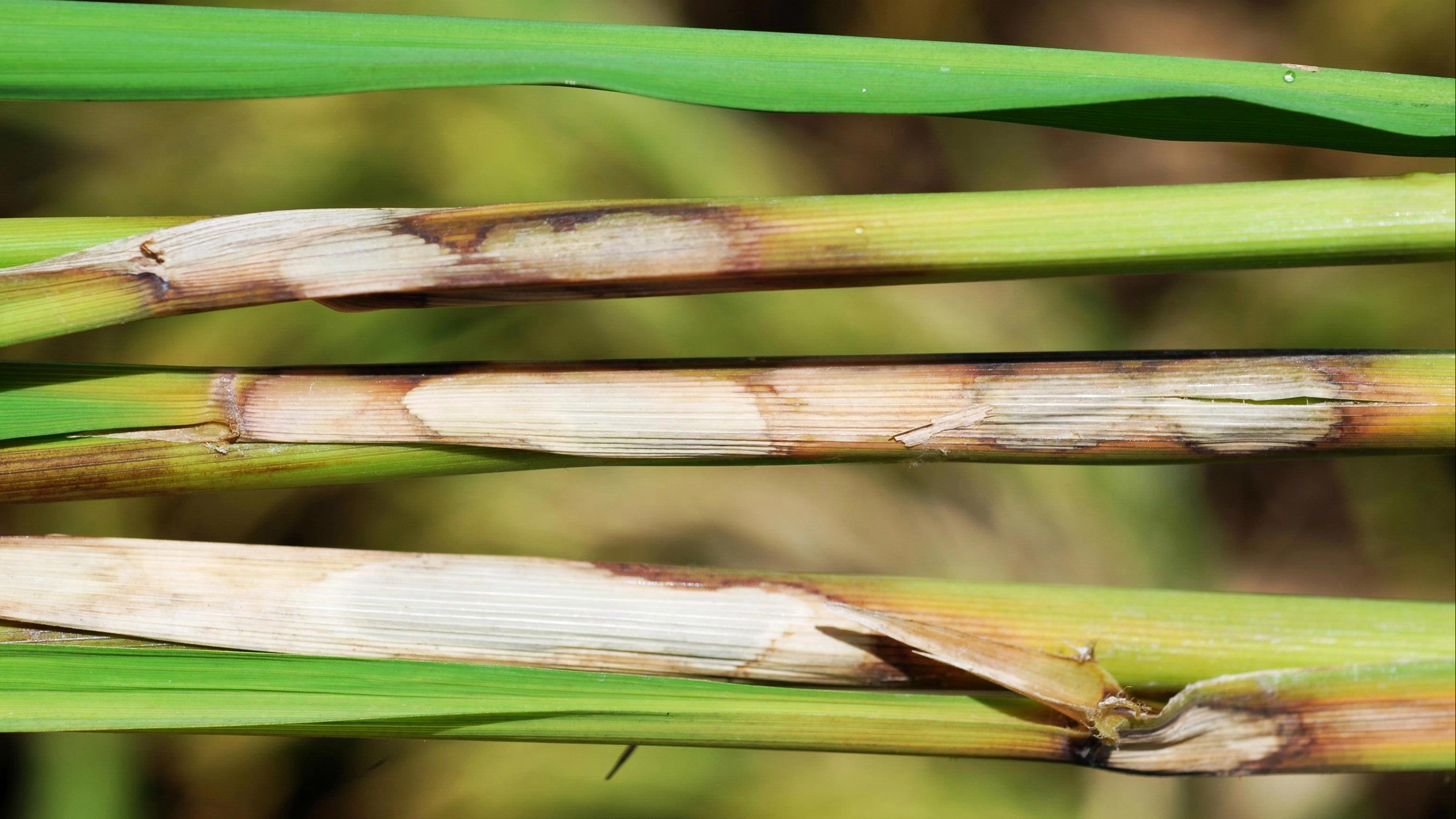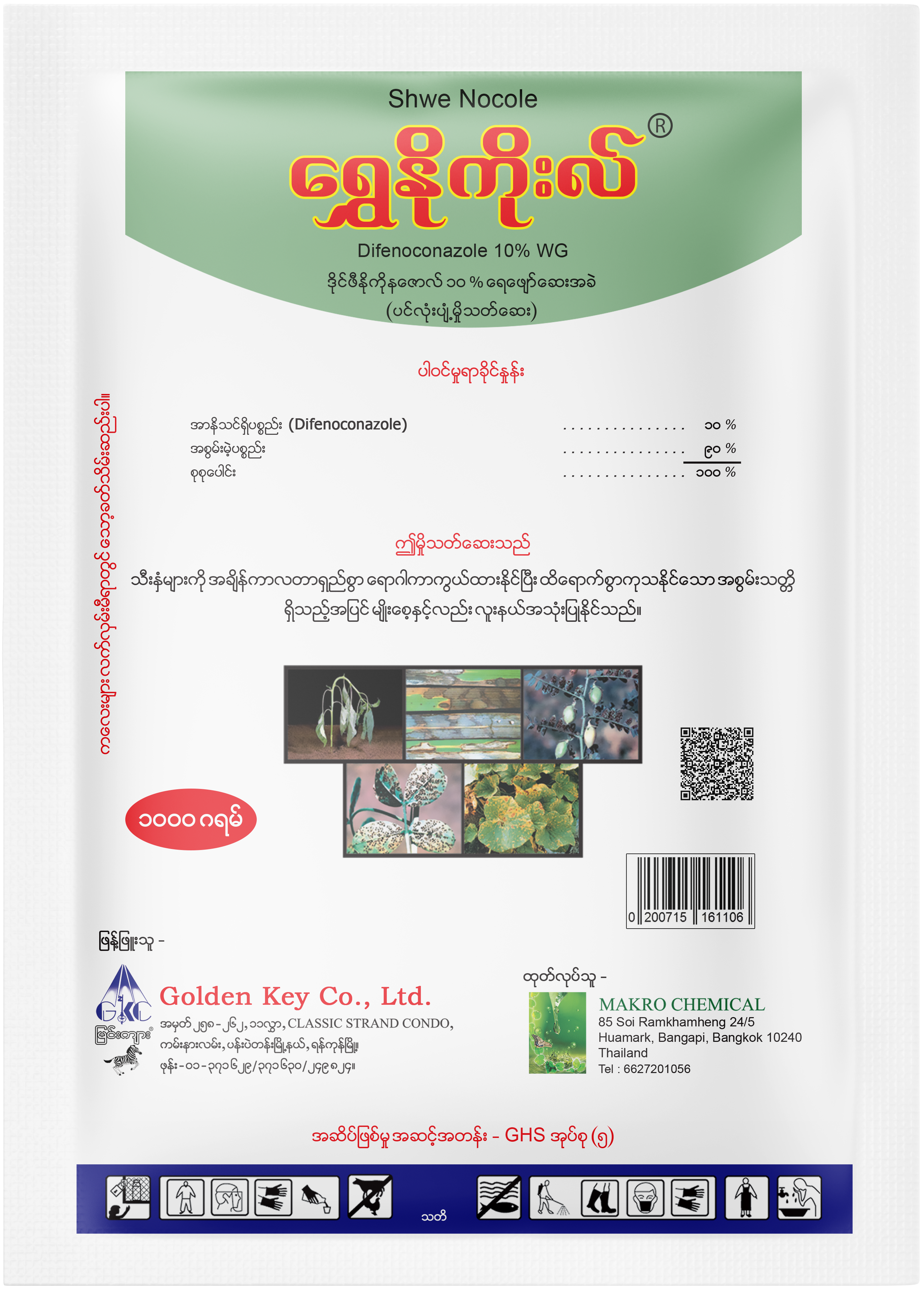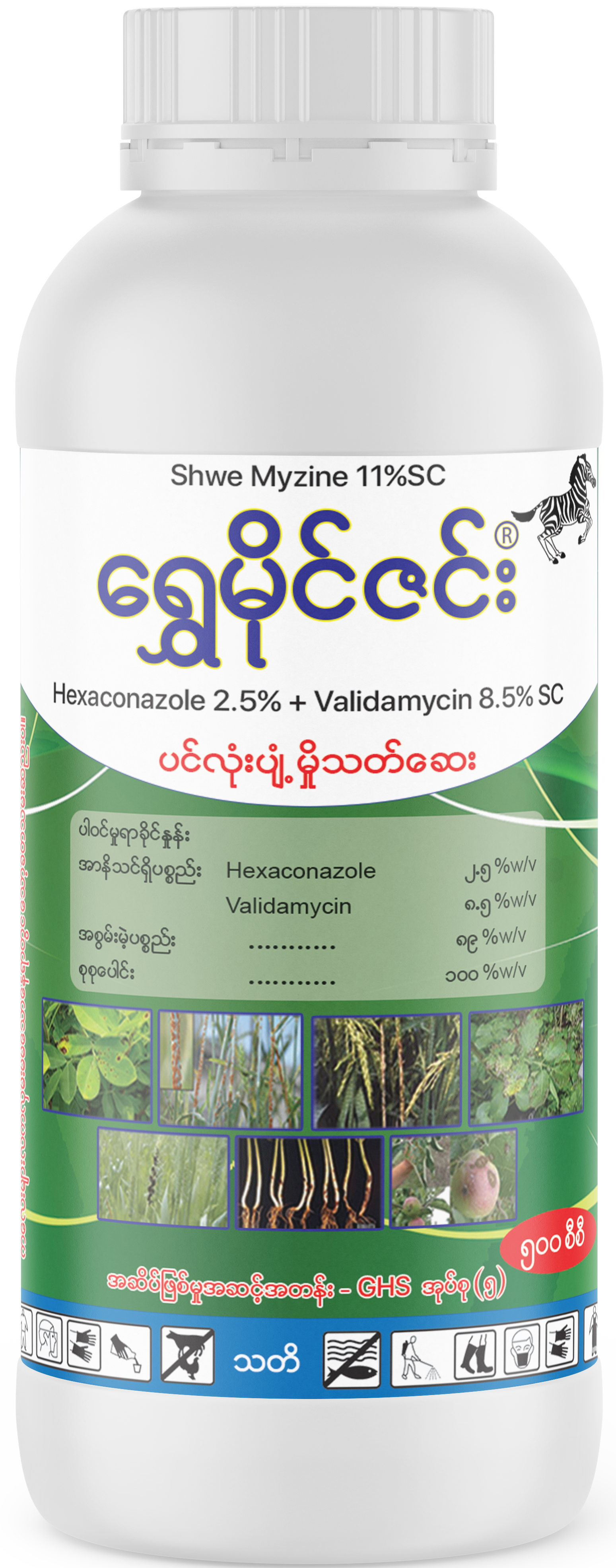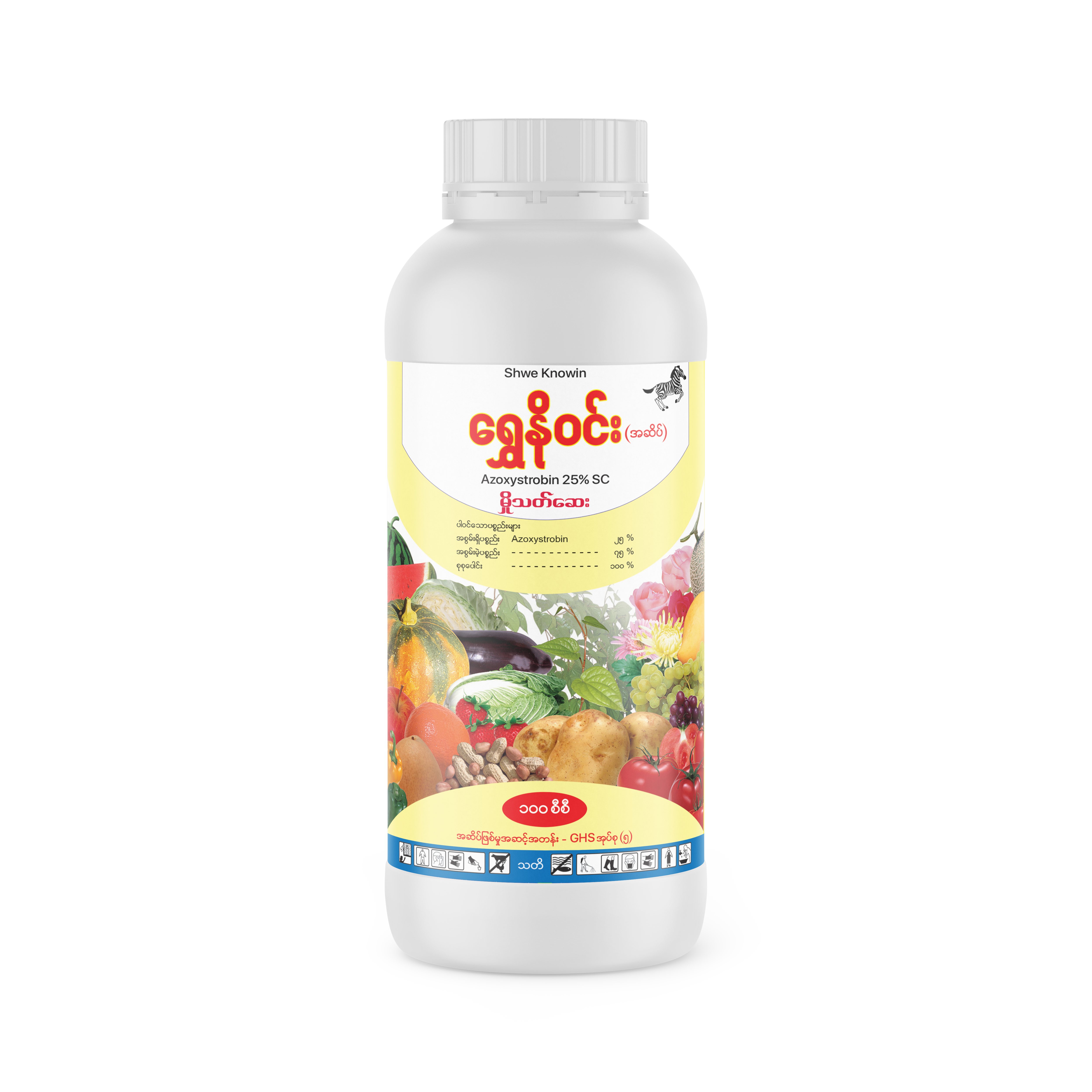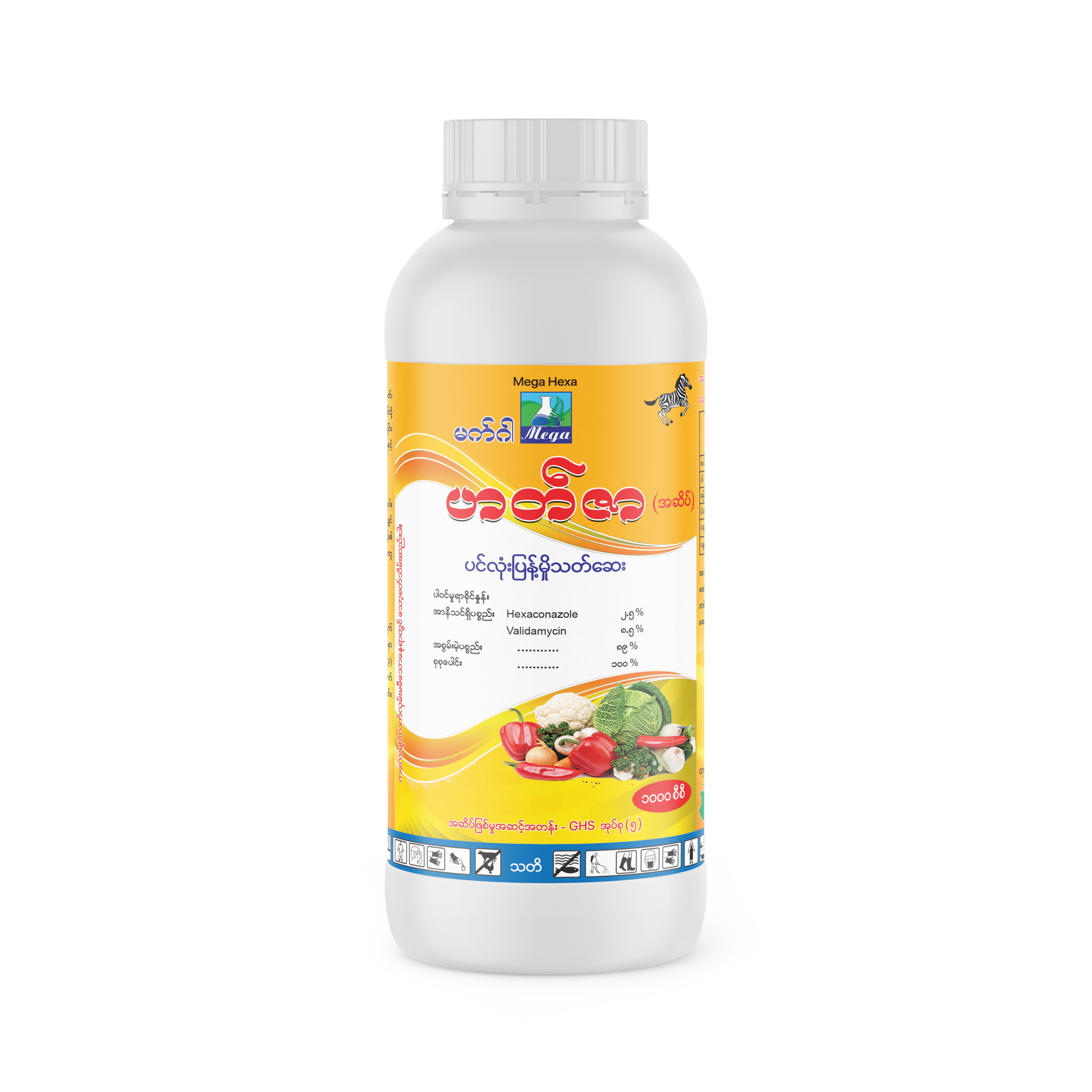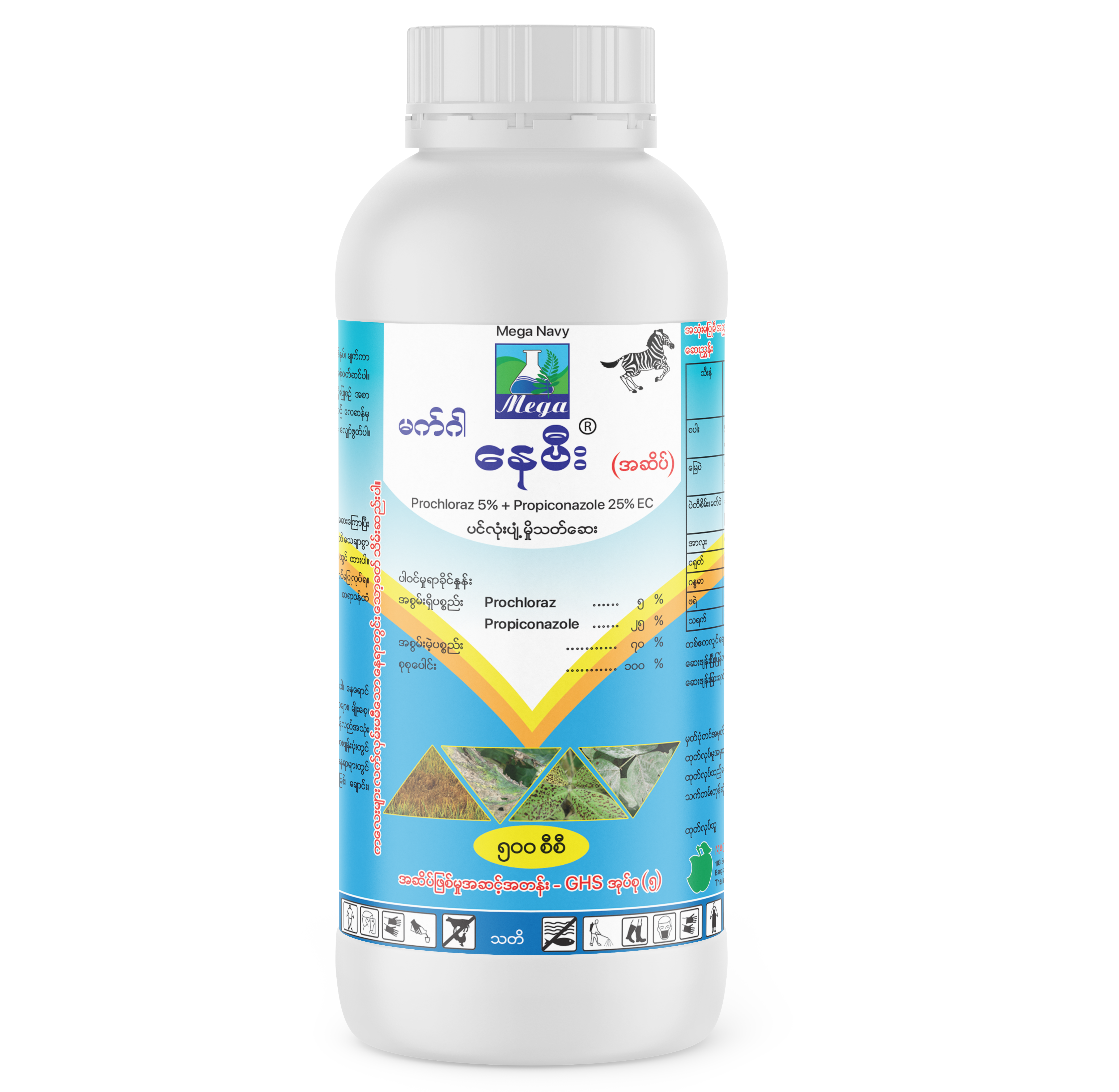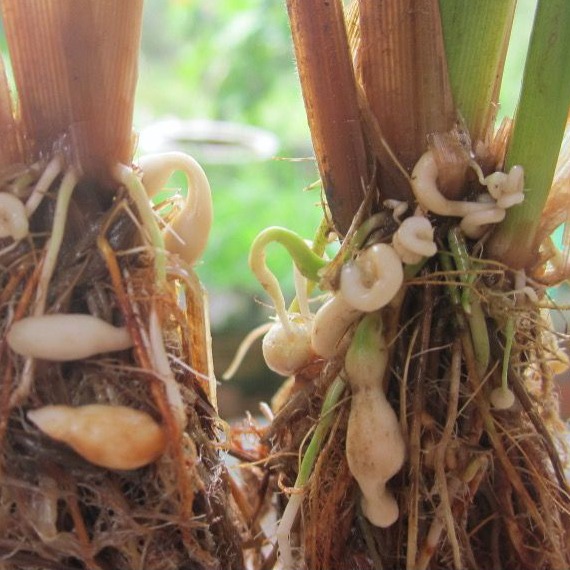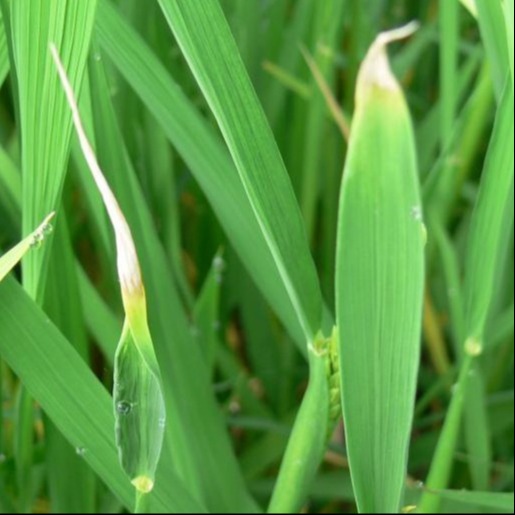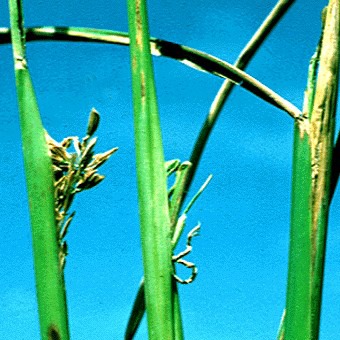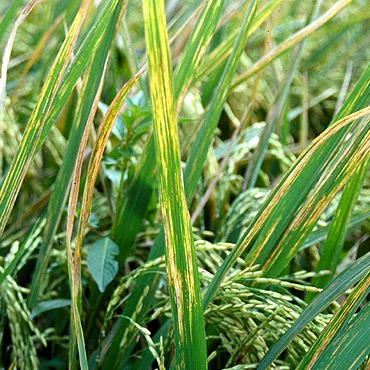Sheath Blight
Symptom
Early symptoms usually develop on the leaf sheaths at or just above the water line as circular, oval or ellipsoid, water-soaked spots which are greenish-gray in color. As the disease progresses, they enlarge and tend to coalesce forming larger lesions with grayish white centers surrounded by tan to dark brown irregular borders or outlines, which may produce a rattlesnake skin pattern. These damaged tissues interrupt the normal flow of water and nutrients to the plant tissues above (leaves and panicles). The damage caused by sheath blight ranges from partial infection of the lower sheaths with little impact on grain filling to the premature death of plants and lodging with a significant reduction in grain yield and quality. Microscopic runner hyphae and pea-sized sclerotia are two signs of pathogen infection. The white, web-like hyphae (threads) of the fungus grow on the sheaths and leaves under favorable conditions and serve to spread the disease from leaf to leaf, causing infections of nearby plants. Sclerotia are white when formed and turn brown or dark brown. Sclerotia of the fungus are formed in the infected sheaths and leaves most typically at the booting to heading stages.


